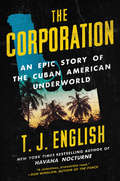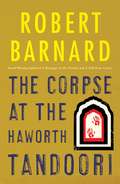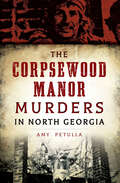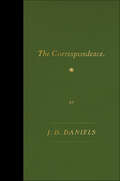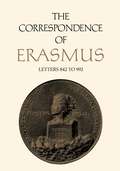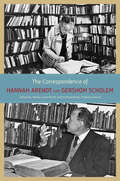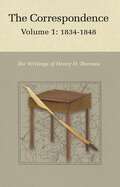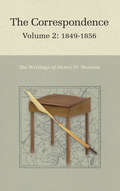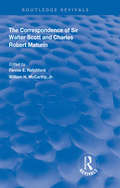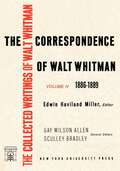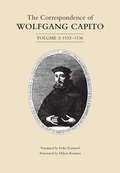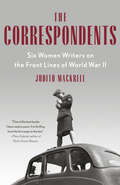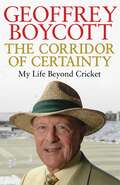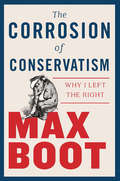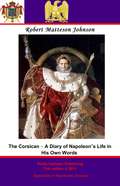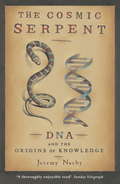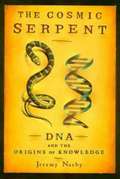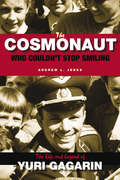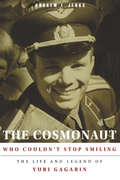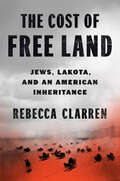- Table View
- List View
The Corporation: An Epic Story of the Cuban American Underworld
by T. J. English“A mob saga that has it all—brotherhood and betrayal, swaggering power and glittering success, and a Godfather whose reach seems utterly unrivaled. What a relentless, irresistible read.” — Don Winslow, New York Times bestselling author of The ForceA fascinating, cinematic, multigenerational history of the Cuban mob in the US from "America’s top chronicler of organized crime"* and New York Times bestselling author of Havana Nocturne.By the mid 1980s, the criminal underworld in the United States had become an ethnic polyglot; one of the most powerful illicit organizations was none other than the Cuban mob. Known on both sides of the law as "the Corporation," the Cuban mob’s power stemmed from a criminal culture embedded in south Florida’s exile community—those who had been chased from the island by Castro’s revolution and planned to overthrow the Marxist dictator and reclaim their nation.An epic story of gangsters, drugs, violence, sex, and murder rooted in the streets, The Corporation reveals how an entire generation of political exiles, refugees, racketeers, corrupt cops, hitmen, and their wives and girlfriends became caught up in an American saga of desperation and empire building. T. J. English interweaves the voices of insiders speaking openly for the first time with a trove of investigative material he has gathered over many decades to tell the story of this successful criminal enterprise, setting it against the larger backdrop of revolution, exile, and ethnicity that makes it one of the great American gangster stories that has been overlooked—until now.Drawing on the detailed reporting and impressive volume of evidence that drive his bestselling works, English offers a riveting, in-depth look at this powerful and sordid crime organization and its hold in the US.
The Corpse at the Haworth Tandoori (Charlie Peace #6)
by Robert BarnardMasterly mystery writer Robert Barnard transports us to the Yorkshire town of Haworth, once home to the literary Brontës, now a crowded tourist mecca, for The Corpse at the Haworth Tandoori, which begins with the shocking discovery of a young man's strangled body in an Indian Tandoori restaurant parking lot. Who is the victim, and how did he come to meet this untimely fate? Detective Constable Charlie Peace and Detective Superintendent Mike Oddie's search for answers soon leads them to Ashworth, a nearby artists' colony, where young Irishman Declan O'Hearn had recently sought work as a handyman. No ordinary place, Ashworth is something of a shrine to once-renowned painter Ranulph Byatt, an egotistic man who craves adulation from his inferiors and resists the judgment of his peers. To the surprise of all and the jealousy of some, Declan O'Hearn is one of the rare people Byatt welcomes into his studio and allows to watch him paint. Charlie Peace, an experienced police officer and always a favorite among Barnard's readers, has rarely encountered such tense undercurrents as he finds at Ashworth, and he's perhaps never been among a group of people so ill-matched. They live in supposed community but lead uniquely warped lives. How does young Declan, inexperienced in the ways of the world, seeking his first great adventure, fit into this dangerous mix? Charlie suspects Declan found more than adventure at Ashworth. Following in Declan's footsteps, he searches for the incredible story behind the body in the parking lot and the sad facts behind the destroyed hopes of a youthful wanderer. With the kind of classic twist that only Barnard can provide, The Corpse at the Haworth Tandoori evokes memories of such Barnard masterpieces as Death by Sheer Torture while claiming its own place in the Barnard body of work as a powerful, insightful, witty, and always superbly entertaining novel of suspense.
The Corpsewood Manor Murders in North Georgia (True Crime Ser.)
by Amy PetullaThe notorious true crime story of a sex party that ended in double murder in the woods of Chattanooga County, Georgia. On December 12th, 1982, Tony West and Avery Brock made a visit to Corpsewood Manor under the pretense of a celebration. Then they brutally murdered their hosts. Dr. Charles Scudder had been a professor of pharmacology at Chicago&’s Loyola University before he and his boyfriend Joey Odom moved to Georgia and built their own home in the Chattahoochee National Forest. Scudder had absconded with twelve thousand doses of LSD and had a very particular vision for their &“castle in the woods.&” It included a &“pleasure chamber,&” and rumors of Satanism swirled around the two men. Scudder even claimed to have summoned a demon to protect the estate. But when Scudder and Odom welcomed West and Brock into their strange abode, they had no idea the men were armed and dangerous. When the evening of kinky fun turned to a scene of gruesome slaughter, the murders set the stage for a sensational trial that engulfed the sleepy Southern town of Trion in shocking revelations and lurid speculations.
The Correspondence
by J. D. DanielsThe first collection from a Whiting Writers’ Award winner whose work has become a fixture of The Paris Review and n+1Can civilization save us from ourselves? That is the question J. D. Daniels asks in his first book, a series of six letters written during dark nights of the soul. Working from his own highly varied experience—as a janitor, a night watchman, an adjunct professor, a drunk, an exterminator, a dutiful son—he considers how far books and learning and psychoanalysis can get us, and how much we’re stuck in the mud.In prose wound as tight as a copper spring, Daniels takes us from the highways of his native Kentucky to the Balearic Islands and from the Pampas of Brazil to the rarefied precincts of Cambridge, Massachusetts. His traveling companions include psychotic kindergarten teachers, Israeli sailors, and Southern Baptists on fire for Christ. In each dispatch, Daniels takes risks—not just literary (voice, tone, form) but also more immediate, such as spending two years on a Brazilian jiu-jitsu team (he gets beaten to a pulp, repeatedly) or participating in group psychoanalysis (where he goes temporarily insane). Daniels is that rare thing, a writer completely in earnest whose wit never deserts him, even in extremis. Inventive, intimate, restless, streetwise, and erudite, The Correspondence introduces a brave and original observer of the inner life under pressure.
The Correspondence Of Charles Darwin: Volume 20 1872
by Janet Browne Frederick Burkhardt James A. Secord Samantha Evans Shelley Innes Francis Neary Alison M. Pearn Anne Secord Paul WhiteThis volume is part of the definitive edition of letters written by and to Charles Darwin, the most celebrated naturalist of the nineteenth century. Notes and appendixes put these fascinating and wide-ranging letters in context, making the letters accessible to both scholars and general readers. Darwin depended on correspondence to collect data from all over the world, and to discuss his emerging ideas with scientific colleagues, many of whom he never met in person. The letters are published chronologically: volume 20 includes letters from 1872, the year in which The expression of the emotions in man and animals was published, making ground-breaking use of photography. Also in this year, the sixth and final edition of On the origin of species was published, and Darwin resumed his work on carnivorous plants and plant movement, finding unexpected similarities between the plant and animal kingdoms.
The Correspondence of Charles Darwin
by Frederick Burkhardt James A. SecordOver 850 letters between Darwin and worldwide correspondents, as he gathered information on human origins and the expression of emotion.
The Correspondence of Charles Darwin 1877: VOLUME 25 (The Correspondence of Charles Darwin)
by Frederick Burkhardt James A. SecordThis volume is part of the definitive edition of letters written by and to Charles Darwin, the most celebrated naturalist of the nineteenth century. Notes and appendixes put these fascinating and wide-ranging letters in context, making the letters accessible to both scholars and general readers. Darwin depended on correspondence to collect data from all over the world, and to discuss his emerging ideas with scientific colleagues, many of whom he never met in person. The letters are published chronologically: volume 25 includes letters from 1877, the year in which Darwin published Forms of Flowers and with his son Francis carried out experiments on plant movement and bloom on plants. Darwin was awarded an honorary LL. D. by Cambridge University, and appeared in person to receive it. The volume contains a number of appendixes, including two on the albums of photograph sent to Darwin by his Dutch, German, and Austrian admirers.
The Correspondence of Charles Darwin: VOLUME 24
by Frederick Burkhardt James A. SecordThis volume is part of the definitive edition of letters written by and to Charles Darwin, the most celebrated naturalist of the nineteenth century. Notes and appendixes put these fascinating and wide-ranging letters in context, making the letters accessible to both scholars and general readers. Darwin depended on correspondence to collect data from all over the world, and to discuss his emerging ideas with scientific colleagues, many of whom he never met in person. The letters are published chronologically: volume 24 includes letters from 1876, the year in which Darwin published Cross and Self Fertilisation in the Vegetable Kingdom, and started writing Forms of Flowers. In 1876, Darwin's daughter-in-law, Amy, died shortly after giving birth to a son, Bernard Darwin, an event that devastated the family. The volume includes a supplement of 182 letters from earlier years, including a newly discovered collection of letters from William Darwin, Darwin's eldest son.
The Correspondence of Erasmus: Letters 842-992 (1518-1519) (Collected Works of Erasmus #6)
by Desiderius Erasmus P. G. Bietenholz R.A.B. Mynors D.F.S. ThomsonThis volume covers a number of significant events and issues in Erasmus' life and in the history of his times. He travels on horseback from Louvain to Basel to assist his publisher and friend Johann Froben during the crucial phases in the production of his revised New Testament, the edition that he feels will be his lasting contribution to the scholarly foundations of the Christian faith. Once it is in the hands of the public he feels he will be able to face the approach of old age more calmly. On the return journey to Louvain he falls gravely ill from what is diagnosed as bubonic plague, but recovers in a month and convalesces in the home of another publisher-friend, Dirk Martens. International politics continue to capture his attention. Requests for funds in support of a papal crusade against the Turks arouse the flames of German national sentiment. With the death of Maximilian I, friends of Erasmus such as Richard Pace, Ulrich von Hutten, and Guillaume Budé are involved in diplomatic negotiations concerning the imperial succession. When Prince Ferdinand arrives from Spain and requires a tutor, the question of Erasmus' own return to active court duties is raised. After the appearance of Luther's Ninety-five Theses on indulgences, purgatory, and papal authority, the question arises among conservatives whether Erasmus' work too is a threat to the traditional ways of the church and society. For the time being, Erasmus is prepared to commend Luther and defend the latter's right to be critical of the church. Erasmus' overriding conviction at this point is that he and Luther are both part of the great intellectual and spiritual renewal that is taking place in so many parts of Europe. As Luther's appearance lends a new kind of spiritual and patriotic vigour to German humanism, the cult of Erasmus–Erasmus the fellow German–becomes an integral part of that new enthusiasm, with Saxony and its elector, Frederick the Wise, at its center. Volume 6 of the Collected Works of Erasmus series.
The Correspondence of Hannah Arendt and Gershom Scholem
by Hannah Arendt Gershom Scholem Marie Luise Knott Anthony DavidFew people thought as deeply or incisively about Germany, Jewish identity, and the Holocaust as Hannah Arendt and Gershom Scholem. And, as this landmark volume reveals, much of that thinking was developed in dialogue, through more than two decades of correspondence. Arendt and Scholem met in 1932 in Berlin and quickly bonded over their mutual admiration for and friendship with Walter Benjamin. They began exchanging letters in 1939, and their lively correspondence continued until 1963, when Scholem’s vehement disagreement with Arendt’s Eichmann in Jerusalem led to a rupture that would last until Arendt’s death a dozen years later. The years of their friendship, however, yielded a remarkably rich bounty of letters: together, they try to come to terms with being both German and Jewish, the place and legacy of Germany before and after the Holocaust, the question of what it means to be Jewish in a post-Holocaust world, and more. Walter Benjamin is a constant presence, as his life and tragic death are emblematic of the very questions that preoccupied the pair. Like any collection of letters, however, the book also has its share of lighter moments: accounts of travels, gossipy dinner parties, and the quotidian details that make up life even in the shadow of war and loss. In a world that continues to struggle with questions of nationalism, identity, and difference, Arendt and Scholem remain crucial thinkers. This volume offers us a way to see them, and the development of their thought, anew.
The Correspondence of Henry D. Thoreau: Volume 1: 1834 - 1848 (Writings of Henry D. Thoreau #24)
by Henry David ThoreauThis is the inaugural volume in the first full-scale scholarly edition of Thoreau's correspondence in more than half a century. When completed, the edition's three volumes will include every extant letter written or received by Thoreau--in all, almost 650 letters, roughly 150 more than in any previous edition, including dozens that have never before been published. Correspondence 1 contains 163 letters, ninety-six written by Thoreau and sixty-seven to him. Twenty-five are collected here for the first time; of those, fourteen have never before been published. These letters provide an intimate view of Thoreau's path from college student to published author. At the beginning of the volume, Thoreau is a Harvard sophomore; by the end, some of his essays and poems have appeared in periodicals and he is at work on A Week on the Concord and Merrimack Rivers and Walden. The early part of the volume documents Thoreau's friendships with college classmates and his search for work after graduation, while letters to his brother and sisters reveal warm, playful relationships among the siblings. In May 1843, Thoreau moves to Staten Island for eight months to tutor a nephew of Emerson's. This move results in the richest period of letters in the volume: thirty-two by Thoreau and nineteen to him. From 1846 through 1848, letters about publishing and lecturing provide details about Thoreau's first years as a professional author. As the volume closes, the most ruminative and philosophical of Thoreau's epistolary relationships begins, that with Harrison Gray Otis Blake. Thoreau's longer letters to Blake amount to informal lectures, and in fact Blake invited a small group of friends to readings when these arrived. Following every letter, annotations identify correspondents, individuals mentioned, and books quoted, cited, or alluded to, and describe events to which the letters refer. A historical introduction characterizes the letters and connects them with the events of Thoreau's life, a textual introduction lays out the editorial principles and procedures followed, and a general introduction discusses the significance of letter-writing in the mid-nineteenth century and the history of the publication of Thoreau's letters. Finally, a thorough index provides comprehensive access to the letters and annotations.
The Correspondence of Henry D. Thoreau: Volume 2: 1849-1856 (Writings of Henry D. Thoreau #28)
by Henry D. Thoreau Robert N. Hudspeth Elizabeth Hall Witherell Lihong XieThis is the second volume in the first full-scale scholarly edition of Thoreau’s correspondence in more than half a century. When completed, the edition’s three volumes will include every extant letter written or received by Thoreau—in all, almost 650 letters, roughly 150 more than in any previous edition, including dozens that have never before been published.Correspondence 2 contains 246 letters, 124 written by Thoreau and 122 written to him. Sixty-three are collected here for the first time; of these, forty-three have never before been published. During the period covered by this volume, Thoreau wrote the works that form the foundation of his modern reputation. A number of letters reveal the circumstances surrounding the publication of A Week on the Concord and Merrimack Rivers in May 1849 and Walden in August 1854, as well as the essays “Resistance to Civil Government” (1849; now known as “Civil Disobedience”) and “Slavery in Massachusetts” (1854), and two series, “An Excursion to Canada” (1853) and “Cape Cod” (1855). Writing and lecturing brought Thoreau a small group of devoted fans, most notably Daniel Ricketson, an independently wealthy Quaker and abolitionist who became a faithful correspondent. The most significant body of letters in the volume are those Thoreau wrote to Harrison Gray Otis Blake, a friend and disciple who elicited intense and complex discussions of the philosophical, ethical, and moral issues Thoreau explored throughout his life.Following every letter, annotations identify correspondents, individuals mentioned, and books quoted, and describe events to which the letters refer. A historical introduction characterizes the letters and connects them with the events of Thoreau’s life, a textual introduction lays out the editorial principles and procedures followed, and a general introduction discusses the history of the publication of Thoreau’s correspondence. Proper names, publications, events, and ideas found in both the letters and the annotations are included in the index, which provides full access to the contents of the volume.
The Correspondence of Sir Walter Scott and Charles Robert Maturim (Routledge Revivals)
by Fannie E. Ratchford William H. McCarthyOriginally published in 1937, The Correspondence of Sir Walter Scott and Charles Robert Maturin contains twenty-two letters presenting a penetrating and vivid self-portrait of Sir Walter Scott. Scott's patronage of Maturin, this impecunious Irish author, giving him wise advice, lending encouragement in his work and at times badly needed financial assistance, extended over a period of twelve years to the time of Maturin's death, and his kind subsequent letters, written to Maturin's family, in the midst of his own great financial troubles, bring to a fitting close this single unit in Scott's rich social life. Since the two men never met, the whole relationship was built up through thier literary work and their letters to each other, displayed in this volume.
The Correspondence of Walt Whitman (Vol #4)
by Eric MillerAfter decades of feminism and deconstruction, romance remains firmly in place as a central preoccupation in the lives of most women. Divorce rates skyrocket, the traditional family is challenged from all sides, and yet romance seems indestructible. In terms of its cultural representation, the popularity of romance also appears unchallenged. Popular fiction, Hollywood cinema, television soap-operas, and the media in general all display a seemingly bottomless appetite for romantic subjects. The trappings of classic romance--white weddings, love songs, Valentine's Day--are as commercially viable as ever. In this anthology of original essays, romance is revisited from a wide spectrum of perspectives, not just in fiction and film but in a whole range of cultural phenomena. Essays range over such issues as Valentine's Day, interracial relationships, medieval erotic visions and modern romance fiction, the relationship between the lesbian poet H. D. and Bryher, the pervasive whiteness of romantic desire, lesbian erotica in the age of AIDS, and the public romance of Charles and Diana.
The Correspondence of Wolfgang Capito
by Erika Rummel Wolfgang Capito Milton KooistraWolfgang Capito (1478-1541), a leading Christian Hebraist and Catholic churchman who converted to Protestantism, was a pivotal figure in the history of the Reformation. After serving as a professor of theology in Basel and adviser to the archbishop of Mainz, he moved to Strasbourg, which became, largely due to his efforts, one of the most important centres of the Reformation movement after Wittenberg.This penultimate volume in the series is a fully annotated translation of Capito's existing correspondence covering the years 1532-36 and culminating in the Wittenberg Concord between the Lutheran and Reformed churches. The correspondence includes Capito's efforts, alongside those of his colleague Martin Bucer, to negotiate that compromise. Other letters deal with local, political, financial, and doctrinal questions, as well as Capito's personal life. The letters demonstrate the importance of Capito and his colleagues in providing advice in matters concerning the churches in southern Germany and Switzerland, but also regarding the evangelicals in neighbouring France.Milton Kooistra's annotation provides historical context by identifying classical, patristic, and biblical quotations as well as persons and places. Continuing in the tradition of rigorous scholarship established in Volume 1 and Volume 2, this volume provides crucial details on the evolution of Capito's thought and its contribution to the Reformation movement.
The Correspondents: Six Women Writers on the Front Lines of World War II
by Judith MackrellThe riveting, untold history of a group of heroic women reporters who revolutionized the narrative of World War II—from Martha Gellhorn, who out-scooped her husband, Ernest Hemingway, to Lee Miller, a Vogue cover model turned war correspondent. "Thrilling from the first page to the last." —Mary Gabriel, author of Ninth Street WomenOn the front lines of the Second World War, a contingent of female journalists were bravely waging their own battle. Barred from combat zones and faced with entrenched prejudice and bureaucratic restrictions, these women were forced to fight for the right to work on equal terms with men. The Correspondents follows six remarkable women as their lives and careers intertwined: Martha Gellhorn, who got the scoop on Ernest Hemingway on D-Day by traveling to Normandy as a stowaway on a Red Cross ship; Lee Miller, who went from being a Vogue cover model to the magazine&’s official war correspondent; Sigrid Schultz, who hid her Jewish identity and risked her life by reporting on the Nazi regime; Virginia Cowles, a &“society girl columnist&” turned combat reporter; Clare Hollingworth, the first English journalist to break the news of World War II; and Helen Kirkpatrick, the first woman to report from an Allied war zone with equal privileges to men. From chasing down sources and narrowly dodging gunfire to conducting tumultuous love affairs and socializing with luminaries like Eleanor Roosevelt, Picasso, and Man Ray, these six women are captured in all their complexity. With her gripping, intimate, and nuanced portrait, Judith Mackrell celebrates these courageous reporters who risked their lives for the scoop.
The Corridor of Certainty
by Geoffrey BoycottAfter a period of his life when a court case and then throat cancer threatened first his career and then his life, Geoffrey Boycott re-emerged as an apparently changed man - but how true had the caricatured image of him as an archetypal Yorkshireman ever really been? In this fascinating new book, his first autobiographical work for 15 years, Boycott not only relives his terrifying battle with cancer but also talks about his many other interests and friendships beyond cricket, with a moving chapter on Brian Clough as well as revealing some surprising enthusiasms: Boycott and feng shui? But Boycott has devoted his life to cricket, and his insights on the game, its players and those who write and talk about it are never less than frank, revealing, entertaining and very honest. Following the death of Tony Greig, Boycott returns to the subject of the Packer revolution to ask how much it really changed things, and he assesses the modern generation of players: how does he rate England's prolific captain Alastair Cook? And is Kevin Pietersen a batting genius or a player who has frittered away his talent? His opinions come with the authority of someone with profound knowledge of and love for the sport. In commentary, he refers to the 'corridor of uncertainty' for a batsman - but with Geoffrey Boycott there is never any room for that, which is why this book is such a compelling and entertaining read.
The Corrosion of Conservatism: Why I Left The Right
by Max BootWarning that the Trump presidency presages America’s decline, the political commentator recounts his extraordinary journey from lifelong Republican to vehement Trump opponent. As nativism, xenophobia, vile racism, and assaults on the rule of law threaten the very fabric of our nation, The Corrosion of Conservatism presents an urgent defense of American democracy. Pronouncing Mexican immigrants to be “rapists,” Donald Trump announced his 2015 presidential bid, causing Max Boot to think he was watching a dystopian science-fiction movie. The respected conservative historian couldn’t fathom that the party of Lincoln, Roosevelt, and Reagan could endorse such an unqualified reality-TV star. Yet the Twilight Zone episode that Boot believed he was watching created an ideological dislocation so shattering that Boot’s transformation from Republican foreign policy adviser to celebrated anti-Trump columnist becomes the dramatic story of The Corrosion of Conservatism. No longer a Republican, but also not a Democrat, Boot here records his ideological journey from a “movement” conservative to a man without a party, beginning with his political coming-of-age as a young émigré from the Soviet Union, enthralled with the National Review and the conservative intellectual tradition of Russell Kirk and F. A. Hayek. Against this personal odyssey, Boot simultaneously traces the evolution of modern American conservatism, jump-started by Barry Goldwater’s canonical The Conscience of a Conservative, to the rise of Trumpism and its gradual corrosion of what was once the Republican Party. While 90 percent of his fellow Republicans became political “toadies” in the aftermath of the 2016 election, Boot stood his ground, enduring the vitriol of his erstwhile conservative colleagues, trolled on Twitter by a white supremacist who depicted his “execution” in a gas chamber by a smiling, Nazi-clad Trump. And yet, Boot nevertheless remains a villain to some partisan circles for his enduring commitment to conservative fiscal and national security principles. It is from this isolated position, then, that Boot launches this bold declaration of dissent and its urgent plea for true, bipartisan cooperation. With uncompromising insights, The Corrosion of Conservatism evokes both a president who has traduced every norm and the rise of a nascent centrist movement to counter Trump’s assault on democracy.
The Corsican – A Diary of Napoleon’s Life in His Own Words: A Diary Of Napoleon's Life In His Own Words... ...
by Pickle Partners Publishing Napoleon I Emperor of the French Robert Matteson JohnsonThis ebook is purpose built and is proof-read and re-type set from the original to provide an outstanding experience of reflowing text for an ebook reader. Napoleon, died on the lonely island of St Helena in 1821, his life, his actions and thoughts have been written about, re-written and revised ever since. It is noticeable that Napoleon himself never left much in the way of works written by himself to record what he did or how he went about it, or to justify his methods or outline his plans. The works that emanated from St Helena, such as the Memorial, were written by those that shared his captivity and for their own purposes. That having been said Napoleon lived in a time without modern communication methods, leaving his vast empire to be run via the pen. Much that Napoleon wrote survived as a measure of this the official correspondence that he left behind is voluminous, running to 32 volumes in the initial edition published under the orders of Napoleon III, many other volumes were published thereafter. From this vast treasure-trove of information about the thoughts, actions and orders that Napoleon left, the American historian Robert Johnson reconstructed his book "The Corsican". The premise behind the books was to create a diary from Napoleon's own works and utterances as if it has been written contemporaneously by the Emperor himself. The result is an intriguing book which is faithful to the words of it's purported owner and includes the shifting themes of his life and his hopes and fears clearly. Fascinating reading. Text taken, whole and complete, from the 1910 edition, published in Boston and New York by Houghton Mifflin. Original - 546 pages. Author - Napoleon I - Emperor of the French 1769-1821 Editor - Robert Matteson Johnson 1867-1920 Linked TOC.
The Cosmic Serpent
by Jeremy NarbyWhile living among Peruvian Indians, anthropologist Jeremy Narby became intrigued by their claim that their phenomenal knowledge of plants and biochemistry was communicated to them directly while under the influence of hallucinogens. Despite his initial scepticism, Narby found himself engaged in an increasingly obsessive personal quest. The evidence he collected - on subjects as diverse as molecular biology, shamanism, neurology and ancient mythology - led inexorably to the conclusion that the Indians' claims were literally true: to a consciousness prepared with drugs, specific biochemical knowledge could indeed be directly transmitted through DNA itself. A gripping investigation that opens fresh perspectives on biology, anthropology and the limits of rationalism, The Cosmic Serpent is new science of the most exhilarating kind.
The Cosmic Serpent: DNA and the Origins of Knowledge
by Jeremy NarbyThis adventure in science and imagination, which the Medical Tribune said might herald "a Copernican revolution for the life sciences," leads the reader through unexplored jungles and uncharted aspects of mind to the heart of knowledge. In a first-person narrative of scientific discovery that opens new perspectives on biology, anthropology, and the limits of rationalism, The Cosmic Serpent reveals how startlingly different the world around us appears when we open our minds to it.
The Cosmonaut Who Couldn't Stop Smiling: The Life And Legend Of Yuri Gagarin
by Andrew Jenks"Let’s go!" With that, the boyish, grinning Yuri Gagarin launched into space on April 12, 1961, becoming the first human being to exit Earth’s orbit. The twenty-seven-year-old lieutenant colonel departed for the stars from within the shadowy world of the Soviet military-industrial complex. Barbed wires, no-entry placards, armed guards, false identities, mendacious maps, and a myriad of secret signs had hidden Gagarin from prying outsiders not even his friends or family knew what he had been up to. Coming less than four years after the Russians launched Sputnik into orbit, Gagarin’s voyage was cause for another round of capitalist shock and Soviet rejoicing. The Cosmonaut Who Couldn’t Stop Smiling relates this twentieth-century icon’s remarkable life while exploring the fascinating world of Soviet culture.
The Cosmonaut Who Couldn’t Stop Smiling: The Life and Legend of Yuri Gagarin (NIU Series in Slavic, East European, and Eurasian Studies)
by Andrew L. Jenks“Let's go!” With that, the boyish, grinning Yuri Gagarin launched into space on April 12, 1961, becoming the first human being to exit Earth's orbit. The twenty-seven-year-old lieutenant colonel departed for the stars from within the shadowy world of the Soviet military-industrial complex. Barbed wires, no-entry placards, armed guards, false identities, mendacious maps, and a myriad of secret signs had hidden Gagarin from prying outsiders—not even his friends or family knew what he had been up to. Coming less than four years after the Russians launched Sputnik into orbit, Gagarin's voyage was cause for another round of capitalist shock and Soviet rejoicing. The Cosmonaut Who Couldn't Stop Smiling relates this twentieth-century icon's remarkable life while exploring the fascinating world of Soviet culture. Gagarin's flight brought him massive international fame—in the early 1960s, he was possibly the most photographed person in the world, flashing his trademark smile while rubbing elbows with the varied likes of Nehru, Castro, Queen Elizabeth II, and Italian sex symbol Gina Lollobrigida. Outside of the spotlight, Andrew L. Jenks reveals, his tragic and mysterious death in a jet crash became fodder for morality tales and conspiracy theories in his home country, and, long after his demise, his life continues to provide grist for the Russian popular-culture mill. This is the story of a legend, both the official one and the one of myth, which reflected the fantasies, perversions, hopes and dreams of Gagarin's fellow Russians. With this rich, lively chronicle of Gagarin's life and times, Jenks recreates the elaborately secretive world of space-age Russia while providing insights into Soviet history that will captivate a range of readers.
The Cost of Being Undocumented: One Woman's Reckoning with America's Inhumane Math
by Antero Garcia Alix DickAn undocumented activist and a social scientist come together to tally of the structural costs of undocumented lifeAn inhumane math pervades this country: even as our government extracts labor and often taxes from undocumented workers, it excludes these same workers from its social safety net. As a result, these essential workers struggle to get their own basic needs met, from healthcare to education, from freedom of association to the ability to drive to work without looking for ICE in the rearview mirror.When Alix Dick's family found themselves in the crosshairs of cartel violence in Sinaloa, Mexico, she and her siblings were forced to flee to the U.S. Many of the scenes that she shares are difficult and unforgettable: escaping from a relationship in which her partner threatened to report her to immigration; getting root canals done in an underground dental clinic. But there are moments of triumph, too: founding her own nonprofit; working on films that tell important stories; and working with her co-author Dr. Garcia to tell her story in a framework that lays bare the realities of structural oppression.As Alix and Antero tally the costs of undocumented life, they present a final bill of what is owed to the immigrant community. In this way, their book flips the traditional narrative about the economics of immigration on its head.
The Cost of Free Land: Jews, Lakota, and an American Inheritance
by Rebecca ClarrenA Kirkus Reviews Best Book of 2023"Sharply insightful . . . A monumental piece of work."—The Boston GlobeAn award-winning author investigates the entangled history of her Jewish ancestors' land in South Dakota and the Lakota, who were forced off that land by the United States governmentGrowing up, Rebecca Clarren only knew the major plot points of her tenacious immigrant family&’s origins. Her great-great-grandparents, the Sinykins, and their six children fled antisemitism in Russia and arrived in the United States at the turn of the 20th century, ultimately settling on a 160-acre homestead in South Dakota. Over the next few decades, despite tough years on a merciless prairie and multiple setbacks, the Sinykins became an American immigrant success story.What none of Clarren&’s ancestors ever mentioned was that their land, the foundation for much of their wealth, had been cruelly taken from the Lakota by the United States government. By the time the Sinykins moved to South Dakota, America had broken hundreds of treaties with hundreds of Indigenous nations across the continent, and the land that had once been reserved for the seven bands of the Lakota had been diminished, splintered, and handed for free, or practically free, to white settlers. In The Cost of Free Land, Clarren melds investigative reporting with personal family history to reveal the intertwined stories of her family and the Lakota, and the devastating cycle of loss of Indigenous land, culture, and resources that continues today.With deep empathy and clarity of purpose, Clarren grapples with the personal and national consequences of this legacy of violence and dispossession. What does it mean to survive oppression only to perpetuate and benefit from the oppression of others? By shining a light on the people and families tangled up in this country&’s difficult history, The Cost of Free Land invites readers to consider their own culpability and what, now, can be done.
